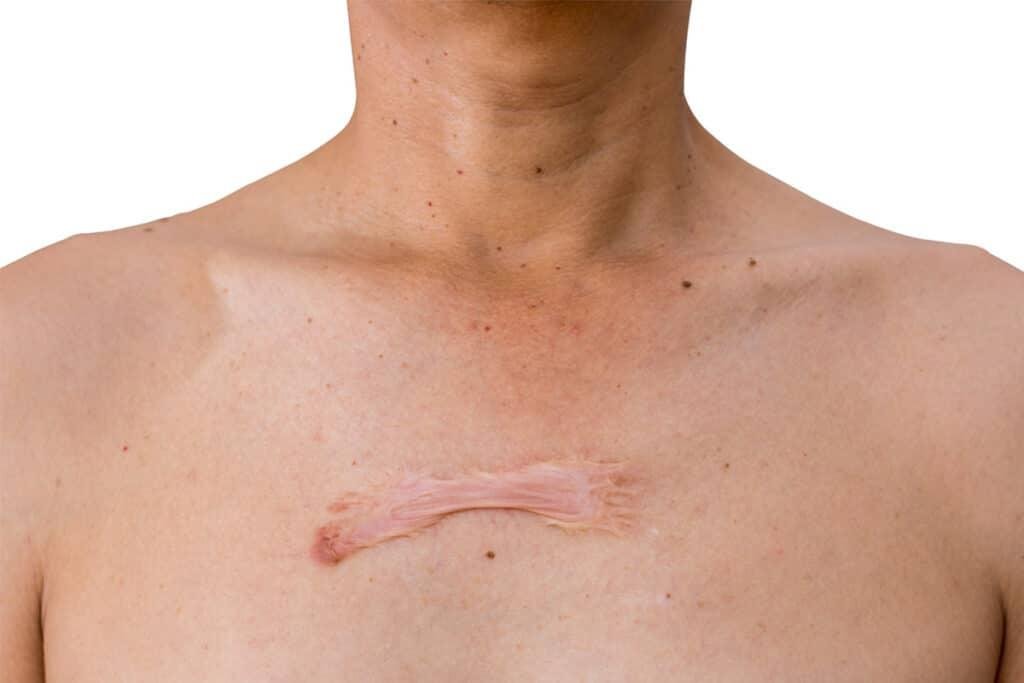Body piercings are a popular form of self-expression and fashion, but for some individuals, they can come with an unwanted side effect—keloid scars. Keloids are raised, often painful or itchy scars that develop due to an overactive healing response. If you’ve noticed an abnormal growth near your piercing, it may be a keloid. For those seeking expert help, advanced Keloid Treatment in Islamabad is now easily accessible. It’s essential to act early and consult professionals, such as the experienced team at SKN Cosmetics clinic, to manage and prevent further complications.
What Are Keloids?
Keloids are a type of hypertrophic scar that continues to grow beyond the boundaries of the original wound. Unlike normal scars, keloids do not fade over time. They are usually shiny, smooth, and feel firm to the touch. Keloids may also cause itching, tenderness, or discomfort, especially when they are in areas subject to movement or pressure.
Why Do Keloids Form After Piercings?
Keloids form as part of an abnormal wound-healing response. When the skin is injured—such as through a piercing—the body produces collagen to heal the area. In some individuals, the body creates too much collagen, resulting in a raised, thick scar.
Common Piercing Sites Prone to Keloids:
-
Ears (especially the earlobes and cartilage)
-
Nose
-
Eyebrows
-
Chest
-
Belly button
Areas with less fatty tissue and more tension or movement are particularly susceptible to keloid formation.
Who Is at Risk?
Not everyone who gets a piercing develops a keloid. Several factors increase the risk:
1. Genetics
If keloids run in your family, you are more likely to develop them.
2. Skin Tone
People with darker skin tones (Fitzpatrick types IV to VI) are at a higher risk.
3. Age
Keloids most often appear in individuals between the ages of 10 and 30.
4. History of Keloids
If you’ve developed keloids in the past (from acne, surgery, or cuts), there’s a strong chance you may develop one again after a piercing.
Early Signs of a Piercing-Related Keloid
It’s important to recognize early symptoms to seek treatment before the keloid grows larger:
-
A raised, firm bump forming at or near the piercing site
-
Continuous growth beyond the original wound margin
-
Itching, burning, or tenderness around the bump
-
A shiny, smooth surface on the scar
It is worth noting that keloids are different from piercing bumps or infections, which are more common and typically resolve on their own or with minimal treatment.
How to Prevent Keloids After a Piercing
1. Know Your Risk
If you have a personal or family history of keloids, reconsider getting a piercing or opt for low-risk areas.
2. Choose a Professional Piercer
An experienced piercer will use sterile equipment, proper techniques, and appropriate jewelry, all of which reduce trauma to the skin and lower your risk of keloid development.
3. Proper Aftercare
Follow aftercare instructions carefully:
-
Clean with saline solution
-
Avoid touching the piercing with unwashed hands
-
Do not twist or move the jewelry unnecessarily
4. Avoid Irritants
Fragranced lotions, alcohol-based products, and poor-quality metals can trigger irritation and contribute to scar formation.
5. Avoid Re-Traumatizing the Area
Don’t change the jewelry too early or allow the piercing to be bumped or snagged on clothing or hair.
What to Do If You Develop a Keloid
Early intervention is key. If you suspect a keloid is forming, consult a dermatologist immediately. There are several treatment options that can help manage and reduce the size of a keloid, especially when addressed promptly.
Treatment Options for Piercing-Induced Keloids
1. Steroid Injections
Corticosteroid injections are often the first line of treatment. They help reduce inflammation and can flatten the keloid over several sessions.
2. Cryotherapy
This involves freezing the keloid tissue with liquid nitrogen. It can shrink the size of the scar but may take multiple sessions.
3. Laser Therapy
Laser treatments can help reduce redness and flatten the keloid, especially when used in conjunction with steroid therapy.
4. Silicone Gel or Sheets
Silicone can help flatten keloids and reduce symptoms like itching. It's a non-invasive, long-term option that's often recommended after other treatments.
5. Surgical Removal
In severe cases, surgical excision may be performed, but it comes with a high risk of recurrence unless combined with other therapies like radiation or steroids post-op.
Emotional Impact and Support
Keloids, especially those on visible areas like the ears or face, can affect a person’s self-esteem and confidence. Addressing these scars is not just about aesthetics; it's also about improving the quality of life. Psychological support, including counseling or support groups, may be helpful for those struggling with the emotional effects of scarring.
Myths and Misconceptions
❌ “Keloids Are Just Swelling”
Keloids are permanent scars, not temporary swelling or infections.
❌ “Only Poor Hygiene Causes Keloids”
While hygiene plays a role in overall healing, keloid formation is largely based on genetics and skin type.
❌ “All Bumps Are Keloids”
Some bumps may be caused by infections, allergic reactions, or trauma, and not all raised scars are keloids.
Conclusion
Keloids from piercings are a real concern, especially for individuals with a known predisposition. While body piercings are a fun and expressive trend, it’s important to weigh the risks and practice careful aftercare. If you do develop a keloid, professional help is essential to manage it effectively.
If you are experiencing keloid formation or want to prevent recurrence, SKN Cosmetics clinic offers expert-led and advanced solutions through their comprehensive Keloid Treatment in Islamabad program. Their experienced dermatologists specialize in scar revision techniques, ensuring optimal cosmetic and medical outcomes for all skin types.
Would you like a meta description, social media teaser, or image suggestions for this blog as well?







